Mental Math Strategies Year 2
Mental Maths
If you’re looking for Mental Math Strategies (year 2) then you’re on the right page. Here you will find what Mental strategies you need to teach and the hands on activities to make learning fun for your kids!
Teaching mental maths is all about helping your students to do everyday maths in their heads.
For students to be successful and confident at doing maths mentally, they need to be explicitly taught a range of mental math strategies and encouraged to use the different strategies to solve the right problem in an efficient manner.
Year 2 Mental Maths Strategies will help students solve maths problems quickly and easily using strategies that will make tricky maths more manageable.
An effective Mental Math program will encourage students to:
- Select & use appropriate strategies for the situation
- Work quickly, flexibly & confidently
- Use mental strategies as a way to solve mathematical problems
- Know that they don’t have to be the quickest, to be able to do mental maths, as they may be reluctant to try to do calculations in their head.
Principles Of Mental Math Programs
Mental calculation should be automatic, fast & accurate.
But to get to this stage involves countless opportunities to experiment, explore & manipulate multi step processes.
Mental maths is a multi-step, “in the hea”, process, involving many fragments, bits & parts of information to hold, remember, & come back to.
The best mental strategies help us to hold onto the steps of the calculation in our head as we go along. And the best mental maths program involves explicit teaching, thinking about thinking, (metacognition) & discussion of the best strategy for the job.
Without this process, mental maths programs become a memory exercise & and just another procedure to remember. In short POINTLESS!
Mental Math Programs For Year 2 Students
A good mental maths program for Year 2 students, in fact all year levels, must include some key elements according to Mental Strategies research by The National Strategies.
In this research it is made very clear that a 5 minute quick fire of times tables facts, or a speed test in NOT a mental Math program!
Research suggests that Teaching Mental Math needs:
- A regular time slot
- Explicitly taught strategies for ALL 4 Operations: addition, subtraction, multiplication, division
- To include teaching special features, properties & laws of numbers
- Be hands-on to help students visualise, or “see” the maths for themself and may involve number lines and ten frames
- Provide time for practice
- Include written jottings, rather than formal algorithms
- Engage in discussion and trial and error (mistakes)
This approach will lead to students…
“who are confident in themself and feel in control of calculations rather that the calculation controlling them.”
What Mental Math Strategies Should I Teach Year 2 Students?
So now down to the nitty gritty… What Mental Math Calculation Strategies do you need to cover in Year 2?
So you may be thinking of a ton of catchy names for strategies, but don’t worry about that, and don’t get bogged down in catchy names. Students will NEVER be asked to name a strategy!
So in our list we have not cited catchy mental math strategy names. There are so many, usually linked to a commercial product, which is what causes a lot of confusion in teaching mental maths.
It’s not the name that’s important, it’s the way the numbers are manipulated that counts.
By all means use a catchy name, just make sure you include all the techniques in this list…
This is what Year 2 Teachers need to Teach:
Remember to:
- Explicitly teach these strategies
- Let the kids practise the steps involved
- Discuss if there’s another way, which is the best strategy for the job?
- Make sure the Kiddos actually use the Strategy to solve problems, and not their favourite technique! Take note of the kids who revert to using an algorithm (sum) or ‘counting on’, to solve, they haven’t got it yet and need more time! Make them do it the way you’re teaching or they’ll never learn a range of strategies!
- Allow the use 10 frames & number lines to model the process of the Mental strategy. If they know the answer because they have memorised some facts then use bigger numbers!
- Allow pencil & paper jottings, it’s part of the process of learning the strategy, but NOT formal algorithms.
- Differentiate by moving the kids through solving problems using concrete materials to act out the steps of the strategy to using abstract “doing it in the head” maths.
Year 2 Mental Maths
Mental Calculation Skills
Explore tags
Mental Maths Activities

Place Value - Partitioning Numbers

Commutative Property - Flip-Flops Addition Mental Maths
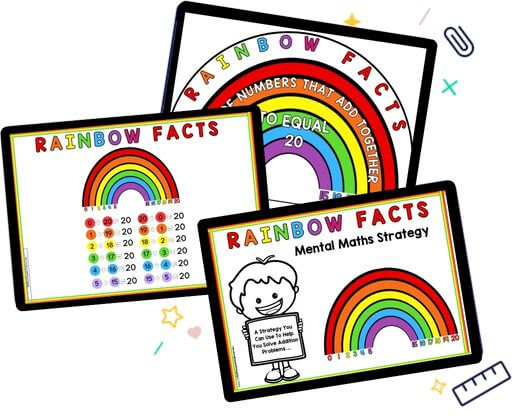
Rainbow Facts to 20 - Addition Mental Maths Strategy

Digi Mental Maths Strategies Games
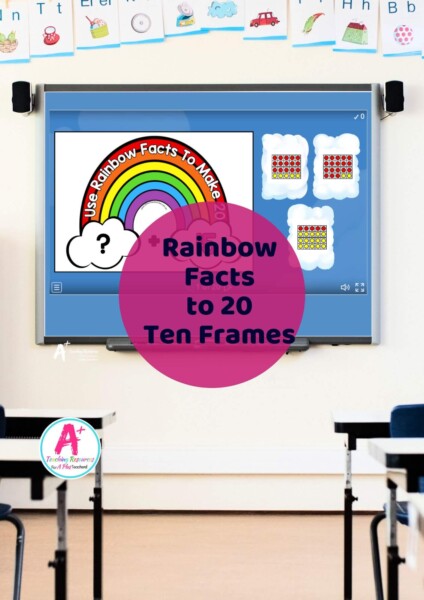
Addition Rainbow Facts -20 (ten frames)
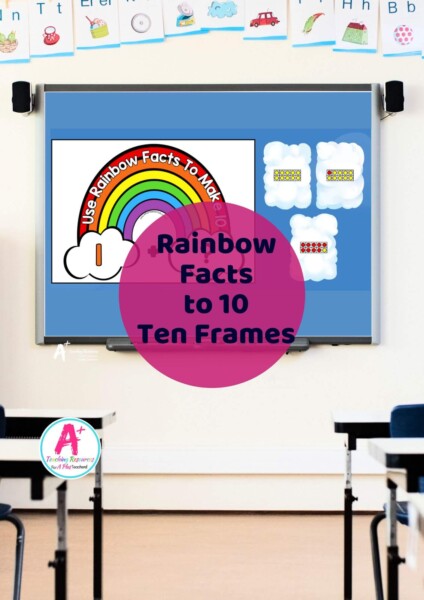
Addition Rainbow Facts -10 (ten frames)

Addition Rainbow Facts - 30 (missing Numbers)
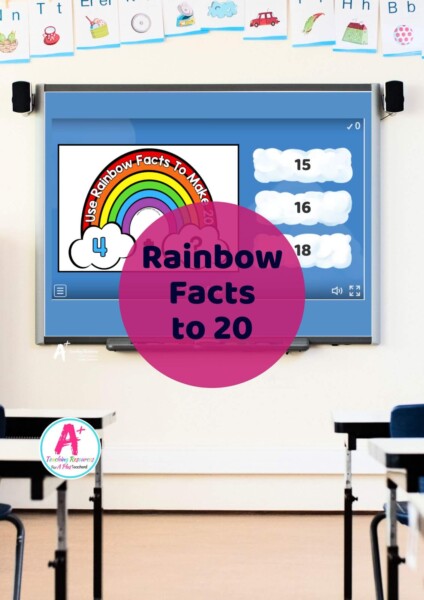
Addition Rainbow Facts -20 (missing numbers)

Addition Rainbow Facts -10 (missing numbers)

Doubles & Near Doubles Mental Maths Strategy
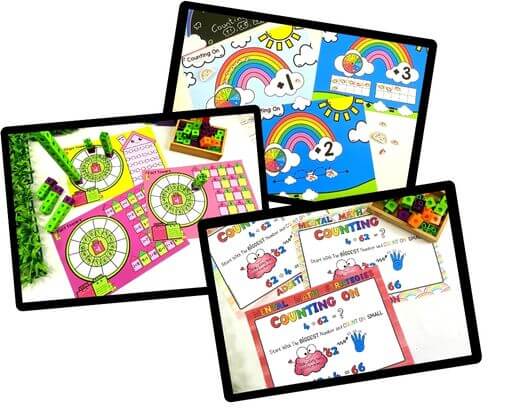
Counting On Mental Maths Strategy
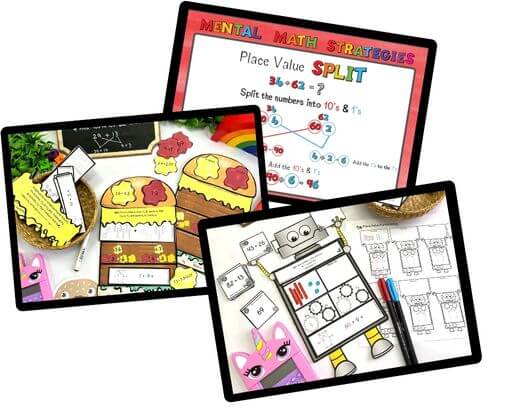
Partitioning / Split Mental Maths Strategy
Can't find what you're looking for?
Send us a request! Use this form to request a resource. Please give details of the learning area, topic, year level, curriculum links. We’ll be happy to take a look to see if we can fit it in. Unfortunately a request does not guarantee we will be able to make it!
"*" indicates required fields
